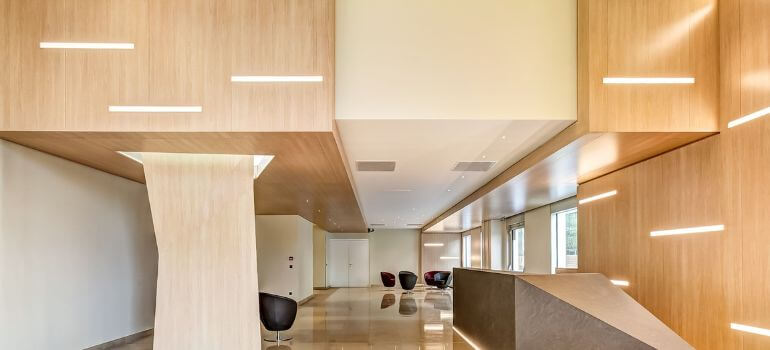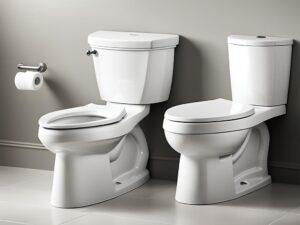Introduction
When it comes to designing or renovating your home, one crucial aspect often overlooked is the ceiling height. It’s not just about the structural confines; it significantly impacts the overall aesthetics and even the property’s value. In this article, we’ll delve into the comparison between 10 ft and 12 ft ceilings, exploring the cost implications, design considerations, and the perplexity homeowners face when making this decision.
Understanding Ceiling Heights
Definition of Ceiling Height
Ceiling height refers to the vertical distance from the floor to the ceiling. It plays a pivotal role in defining the spatial experience within a room.
Common Ceiling Height Standards
While standard ceiling heights typically range from 8 to 9 feet, the choice between 10 ft and 12 ft ceilings introduces an intriguing dimension to interior design.
How Ceiling Height Affects Perception
The ceiling height can significantly influence how we perceive space. Higher ceilings often create a sense of openness and airiness, while lower ceilings may evoke coziness.
Advantages of 10 ft Ceilings

Increased Sense of Openness
Homes with 10 ft ceilings create an immediate sense of openness. The additional vertical space contributes to an expansive atmosphere, making rooms feel larger and more inviting. This advantage is particularly beneficial for smaller spaces, where the perception of spaciousness can significantly enhance overall comfort.
Better Lighting Options
One notable advantage of 10 ft ceilings is the increased flexibility in lighting design. The added height allows for more creative lighting solutions, such as hanging fixtures, pendant lights, or even tall floor lamps. This versatility not only enhances the aesthetic appeal of the space but also improves the overall functionality by providing ample and customizable illumination.
Enhanced Ventilation and Air Circulation
Taller ceilings facilitate better ventilation and air circulation within a room. The increased vertical space allows hot air to rise, creating a more efficient airflow. This feature is particularly advantageous in warmer climates or during the summer months, contributing to a cooler and more comfortable living environment.
Aesthetic Appeal
Beyond the practical benefits, 10 ft ceilings offer aesthetic advantages. The elevated height provides an opportunity for visually appealing design elements, such as crown moldings or tall windows. These architectural features not only add character to the space but also contribute to a more sophisticated and elegant interior.
Potential for Vertical Storage
Higher ceilings open up possibilities for vertical storage solutions. Tall bookshelves, cabinets, or even artwork can be accommodated without making the room feel cramped. This not only maximizes storage capacity but also adds an element of functionality to the design, creating a harmonious balance between form and utility.
Versatility in Interior Design
10 ft ceilings provide greater versatility in interior design. Homeowners have more freedom to experiment with various decorating styles, including the placement of artwork, mirrors, or other decorative elements on the walls. The increased vertical space allows for a more dynamic and visually engaging design aesthetic.
Elevated Resale Value
Homes with 10 ft ceilings often command higher resale values. The perceived luxury and spaciousness associated with taller ceilings can be attractive to potential buyers, making the property more desirable in the real estate market. This advantage becomes particularly relevant when considering long-term investment and the potential return on investment.
Improved Acoustic Quality
Taller ceilings contribute to better acoustic quality within a space. The increased vertical distance reduces the likelihood of sound reverberation and echo, creating a more pleasant and comfortable auditory experience. This is especially advantageous in areas where minimizing noise is a priority, such as bedrooms or home offices.
Visual Continuity Between Rooms
In homes with 10 ft ceilings, there is a natural visual continuity between rooms. The seamless transition from one space to another enhances the overall flow and coherence of the interior design. This cohesive design element can create a more harmonious and interconnected living environment.
Modern and Trendy Aesthetics
Taller ceilings align with modern architectural trends, providing a contemporary and trendy aesthetic. Many homeowners and designers prefer the clean lines and spacious feel associated with 10 ft ceilings, making them a popular choice for those seeking a modern and up-to-date home design.
Disadvantages of 10 ft Ceilings
Challenges with Heating and Cooling
While 10 ft ceilings offer advantages, they may pose challenges in maintaining optimal room temperatures.
Potential Cost Implications
Choosing 10 ft ceilings may have cost implications, but understanding the long-term benefits is crucial.
Advantages of 12 ft Ceilings
Grand and Luxurious Aesthetic Appeal
One of the primary advantages of 12 ft ceilings is the grand and luxurious aesthetic they impart to a space. The heightened ceiling creates a sense of opulence and grandeur, making rooms feel more expansive and visually stunning. This luxurious touch is particularly appealing in larger homes and rooms.
Ideal for Larger Spaces
In spacious interiors, 12 ft ceilings prevent the room from feeling cavernous or overwhelming. The increased height maintains a balanced proportion, creating a harmonious and well-proportioned environment. This advantage is especially beneficial in areas with substantial square footage, ensuring a sophisticated and well-designed atmosphere.
Potential for Creative Design Elements
The added vertical space provided by 12 ft ceilings opens up opportunities for creative design elements. Homeowners and designers can incorporate tall windows, elaborate crown moldings, or even unique architectural features that draw the eye upward. These design elements contribute to a distinctive and personalized aesthetic.
Enhanced Natural Light
Taller ceilings allow for larger windows, promoting the entry of more natural light into the space. This not only creates a bright and airy atmosphere but also contributes to energy efficiency by reducing the reliance on artificial lighting during daylight hours. The enhanced natural light can positively impact mood and well-being.
Improved Ventilation
Similar to 10 ft ceilings, 12 ft ceilings contribute to improved ventilation. The increased vertical space allows hot air to rise more effectively, promoting better air circulation. This advantage can be particularly beneficial in warmer climates, ensuring a cooler and more comfortable living environment.
Architectural Statement
Homes with 12 ft ceilings make a bold architectural statement. The elevated height becomes a focal point, adding character and uniqueness to the overall design. This architectural prominence can be especially advantageous for homeowners looking to create a distinctive and memorable home.
Display Space for Tall Furniture and Artwork
The additional height provided by 12 ft ceilings accommodates tall furniture pieces and artwork. This allows homeowners to showcase statement furniture or large art installations without the risk of them overpowering the room. It opens up possibilities for creative and impactful interior design.
Dramatic Lighting Fixtures
Taller ceilings offer the perfect canvas for dramatic lighting fixtures. Chandeliers, pendant lights, or other hanging fixtures can be installed at a height that accentuates the grandeur of the space. These eye-catching lighting elements become focal points, adding to the overall elegance of the room.
Enhanced Acoustic Quality
Similar to 10 ft ceilings, 12 ft ceilings contribute to improved acoustic quality. The increased vertical distance minimizes sound reverberation and echo, creating a more controlled and comfortable auditory environment. This is particularly advantageous in areas where sound quality is a priority, such as home theaters or music rooms.
Potential for Mezzanine or Loft Spaces
In homes with 12 ft ceilings, there is the potential to create mezzanine or loft spaces. This adds an extra dimension to the living space, providing additional areas for relaxation, work, or storage. Mezzanines enhance the functional versatility of the home, making the most of the vertical space.
Disadvantages of 12 ft Ceilings
Limited Heating Efficiency
Maintaining a comfortable temperature in spaces with 12 ft ceilings may require more energy.
Higher Construction Costs
The initial construction costs for 12 ft ceilings can be higher, impacting the overall budget.
Cost Considerations
Initial Construction Costs
When contemplating the ceiling height for your home, it’s crucial to factor in the initial construction costs associated with each option. Generally, building spaces with 12 ft ceilings involves more materials and labor, which can contribute to higher upfront expenses compared to the construction of 10 ft ceilings.
Long-Term Maintenance Expenses
Beyond the initial construction, it’s essential to consider the long-term maintenance expenses associated with your chosen ceiling height. While both 10 ft and 12 ft ceilings have their merits, maintenance costs can vary. Taller ceilings might require more effort and resources for ongoing upkeep, such as painting or addressing potential issues related to heating and cooling systems.
Heating and Cooling Efficiency
Heating and cooling efficiency play a significant role in the overall cost considerations. Higher ceilings, such as those at 12 ft, may pose challenges in maintaining optimal temperatures. The increased volume of air in rooms with taller ceilings means more energy is required for effective heating in colder seasons and cooling in warmer months. This can result in higher energy bills over time.
Construction Materials
The choice of construction materials also influences the overall cost. Taller ceilings may require more substantial materials to ensure structural integrity, impacting costs. Conversely, standard 10 ft ceilings often use more readily available and cost-effective materials. Carefully weighing the material options against your budget is a crucial aspect of cost-conscious decision-making.
Architectural and Design Features
Consideration should be given to the architectural and design features associated with each ceiling height. Intricate moldings, decorative elements, or unique design features can contribute to the overall cost. While 12 ft ceilings provide more opportunities for such features, they may also entail additional expenses in terms of materials and craftsmanship.
Property Value and Return on Investment
Evaluate the potential impact on property value and return on investment when factoring in cost considerations. While 12 ft ceilings can enhance a home’s market appeal, it’s essential to assess whether the initial and ongoing costs align with the potential increase in property value. A well-informed decision involves weighing the upfront investment against the long-term financial benefits.
Customization and Personalization
Customization and personalization, while enhancing the uniqueness of your living space, can contribute to costs. Consider any customization desires, such as specific architectural details or unique design elements, and factor in the associated expenses. This ensures that the chosen ceiling height aligns not only with your aesthetic preferences but also with your budgetary constraints.
Consultation and Professional Advice
Engaging with professionals, such as architects or interior designers, is a cost-effective strategy in the decision-making process. Seeking their advice can help you understand the potential costs involved and guide you towards an informed decision based on your preferences, budget, and long-term goals.
Real Estate Impact
How Ceiling Height Affects Property Value
Explore the correlation between ceiling height choices and the property’s market value.
Market Trends and Buyer Preferences
Understand the current market trends and the preferences of potential buyers regarding ceiling heights.
Perplexity of Ceiling Height Choices
Balancing Practicality and Aesthetics
The decision between 10 ft and 12 ft ceilings often introduces a perplexing challenge of balancing practicality with aesthetics. While taller ceilings can create a luxurious and visually striking ambiance, practical considerations such as heating, cooling, and long-term maintenance must be weighed against the desire for a grand aesthetic appeal. Striking the right balance ensures that your choice aligns with both functional needs and design preferences.
Assessing Personal Preferences and Needs
Navigating the perplexity of ceiling height choices requires a deep exploration of personal preferences and the specific needs of the living space. Consider the intended purpose of each room—whether it’s a cozy living area, a functional kitchen, or a serene bedroom. Understanding how different ceiling heights contribute to the atmosphere helps in making choices that align with your lifestyle and create spaces that genuinely resonate with you.
Impact on Room Perception
The perplexity extends to the impact of ceiling height on the perception of each room. Higher ceilings, such as those at 12 ft, can evoke a sense of grandeur and openness, but they might not suit every space. Lower ceilings, like the standard 10 ft, can create a cozier atmosphere. Balancing the desire for spaciousness with the need for intimate, comfortable settings becomes a key consideration in the decision-making process.
Functionality and Daily Living
Practical functionality in daily living is a central aspect of the perplexity surrounding ceiling height choices. Consider how the chosen height will influence the placement of furniture, lighting, and storage solutions. Ensure that the selected ceiling height not only meets aesthetic preferences but also enhances the functionality of the space, contributing to a comfortable and convenient daily living experience.
Future Resale and Market Trends
The perplexity extends to future considerations, particularly in terms of resale value and evolving market trends. While personal preferences should guide your decision, it’s essential to be mindful of how your choice may resonate with potential buyers in the future. Striking a balance between creating a personalized space and adhering to broader market trends adds an extra layer of complexity to the decision-making process.
Architectural Harmony
Achieving architectural harmony within your home is another dimension of the perplexity associated with ceiling height choices. Consider how the chosen height integrates with the overall architectural style of your home. A harmonious design ensures that the ceiling height not only stands out as a focal point but also seamlessly integrates into the cohesive aesthetic of the entire living space.
Practical Budgetary Constraints
Budgetary constraints add a pragmatic layer to the perplexity of ceiling height choices. While the desire for grandeur may lean towards 12 ft ceilings, practical considerations may necessitate a more budget-friendly option. Finding a compromise that aligns with both aesthetic aspirations and financial constraints requires thoughtful decision-making and possibly exploring creative design solutions that achieve a balance between cost and impact.
Seek Professional Guidance
In navigating the perplexity of ceiling height choices, seeking professional guidance becomes invaluable. Architects and interior designers can provide insights into how different heights may align with your vision, lifestyle, and budget. Their expertise aids in making informed decisions that consider both the aesthetic and practical aspects, ultimately leading to a well-balanced and satisfying outcome.
Burstiness in Design
Incorporating Burstiness for Unique Spaces
Learn how to infuse burstiness into the design for a unique and personalized living space.
Balancing Burstiness with Functionality
Discover the art of balancing burstiness with functionality for a harmonious living environment.
Tips for Decision Making
Assessing the Purpose of the Space
Consider the primary purpose of the space to determine the most suitable ceiling height.
Considering Long-Term Goals
Think about long-term goals and how the chosen ceiling height aligns with your vision for the future.
Consulting with Professionals
Seek advice from architects and designers to make informed decisions about ceiling height.
Case Studies
Examples of Successful 10 ft Ceiling Designs
Explore real-life examples of homes where 10 ft ceilings have been successfully implemented.
Examples of Impressive 12 ft Ceiling Implementations
Discover inspiring case studies showcasing the impressive design possibilities of 12 ft ceilings.
Conclusion
In conclusion, the choice between 10 ft and 12 ft ceilings is not merely about costs; it’s a decision that shapes the entire living experience. Consider the advantages and disadvantages, weigh the cost implications, and most importantly, align your choice with the purpose and aesthetics of the space. Whether you opt for the openness of 10 ft or the grandeur of 12 ft, make a decision that enhances your home’s uniqueness and functionality.
FAQs
The standard ceiling height in most homes ranges from 8 to 9 feet.
To estimate the cost difference, consult with contractors and consider both initial construction costs and long-term maintenance expenses.
Maintaining 12 ft ceilings may require more effort, especially in terms of heating and cooling.
While higher ceilings can enhance property value, other factors like market trends and buyer preferences also play a role.
Changing the ceiling height in an existing space is a complex undertaking and may involve significant renovations.



